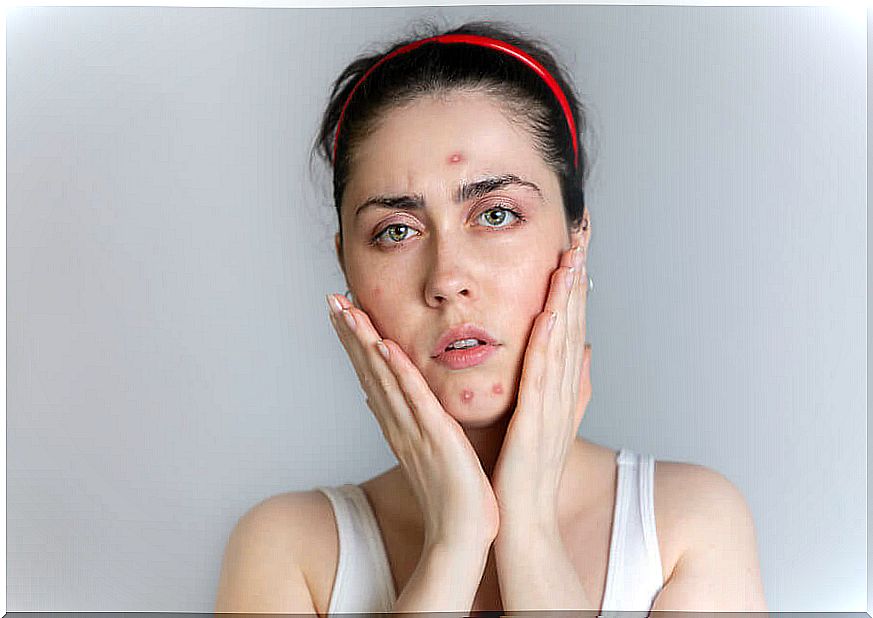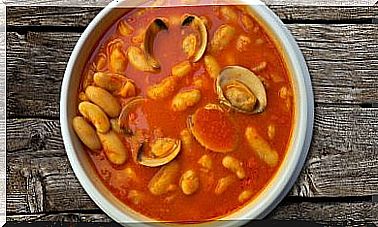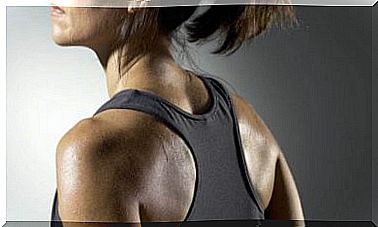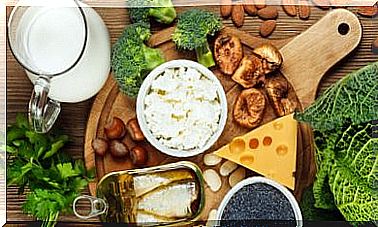Is There A Relationship Between Diet And Acne?
The possible relationship between diet and acne has been investigated for decades. It is a disease that is triggered in the pilosebaceous follicle, which is characterized by the presence of small pimples or bumps in different parts of the body.
Androgens produce a double effect, stimulate sebum production and obstruct the duct through which the sebum must be eliminated. This process ends with inflammation of the gland and its colonization by bacteria. Acne is a very common dermatological disorder in the population. Its incidence is enormous among adolescents, exceeding 85%. In addition, it can also appear in 54% of women and in 40% of men over 25 years of age.
Until a few decades ago it was advised not to consume chocolate, nuts, fried foods or sausages because they allegedly worsened the symptoms of the disease. However, the results of the studies carried out do not find evidence between the presence of these foods in the diet and the appearance of acne.
Diet and acne: the key could be in the glycemic index
In recent years, the influence of high glycemic index foods on acne has been studied. The results suggest that the consumption of refined and dairy sugars could have an influence on the appearance of the symptoms of the disease.
These foods promote the secretion of androgens, which are the basis of the changes that occur in the sebaceous follicle, triggering their inflammation.

Ketogenic diet as acne treatment
Some authors propose following a ketogenic diet to improve the disease. The restriction of carbohydrates and high-glycemic foods could markedly improve the symptoms of the disease and reduce the processes of inflammation.
There are no randomized clinical trials linking milk consumption with acne, nor the influence of dietary fat on it. Thus, the best prevention method, according to today’s evidence, would be to restrict carbohydrates and processed foods.
Beware of excess protein
An investigation published in the Journal of the American Academy of Dermatology , warns of the possible appearance of acne derived from supplementation with high doses of protein. In any case, the results do not allow a high-evidence relationship between the protein load in the diet and the appearance or severity of the disease, since in all the studies there are quite a few biases.
On the one hand, these are always individuals with a high body mass index; on the other hand, some of them use doping substances, which would modify the amount of androgens in the body, which are the basis of the pathology.
Genetics play an important role
Acne is a disease that occurs in 85% of adolescents between 15 and 24 years of age. Despite this, genetic inheritance conditions the appearance of this pathology.
People with dry skin are less prone to acne development since they have less sebum in the follicles and, therefore, less likely to be inflamed by bacterial loads.

Effective treatments
Beyond the role that diet can play in preventing or reducing the signs and symptoms of acne, the most effective treatments against this alteration are pharmacological.
The bacteria that cause these inflammations are sensitive to many drugs such as benzoyl peroxide or clindamycin. These treatments are usually presented in topical creams, although in the most severe cases an oral treatment is chosen.
Diet could be a turning point in acne treatment
Acne is a highly common disease among teenagers. Hormonal changes and androgen load are the main risk factor. However, diet can influence the severity of the disease.
Diet and acne have been linked to a myriad of myths for years. At present, it is suspected that the only of these possible relationships is with foods rich in simple sugars that stimulate insulin production.
In any case, it is advisable to go to the dermatologist when the symptoms of the disease begin in order to assess whether it is necessary to resort to medication to prevent further injuries.









